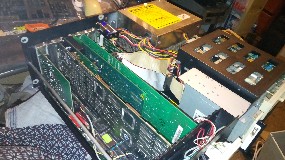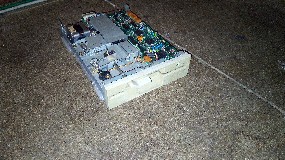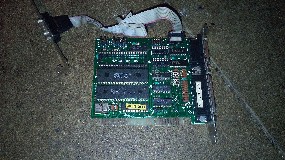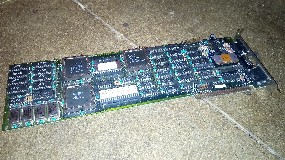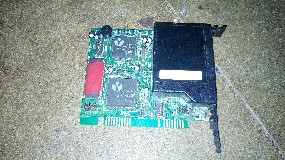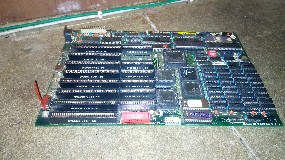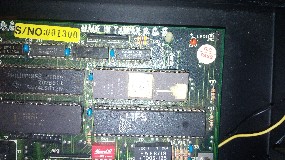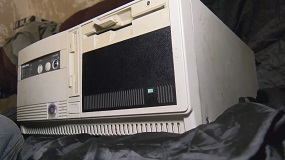|

Overview

Tawnia as of September 2022
There's no glamour here:
Tawnia is a big white box with no remarkable qualities on the surface.
Performance seems lacking and the 80286 running at single figure clock
speeds crawls compared to those later 12 and 16MHz models, as well as
running at higher temperatures. Indeed, the whole machine is full of NMOS
parts, which use significantly more power than the later CMOS technology
and, as such, dissipate far more heat. This is because Tawnia would have
been an early attempt to clone a relatively high performance system. At
that time, CMOS was less mature, prohibitively expensive and thought less
resilient due to much smaller margins for error.
The motherboard has had many
parts replaced over its lifetime, but it seems that it has its origins in
1985, probably less than one year after the IBM 5170 was introduced. The
Intel 386 would be launched later that year, but would not be used in a PC
until September of 1986, meaning that for a time, our 286 here would have
been the pinnacle of performance. Something that is often overlooked is
the sheer speed that the 286 was capable of over the original 8088. At the
same clock speed, the 80286 will perform more than twice as fast as the
8088 in many applications. It also had a 24-Bit address bus, so could
theoretically support upto 16MiB of RAM, though this would not be very
useful until later in the CPU's lifetime, if only due to the cost of
memory. Our board tops out at 1MiB without using expansion cards and
actually incurs a limit that was in place on the original 5170 - while you
can configure the board for 640KiB base memory, it would be split into
banks of 256K+256K+64K+64K. If you populate the last two banks with
another 256K each and configure the dipswitches, you'll get only 512KiB of
base memory, with the remaining 512K mapped as XMS. The early IBM AT
machines supported only 512KiB of RAM in the motherboard. Today this
sounds like quite the limitation, as we're used to seeing even XT class
machines show up with the full 640KiB, but at the time, many if not the
majority of machines wouldn't have been fully populated and you could buy
a PC with as little as 64KiB of RAM.
One thing our clone does
allow you to do is disable wait states, but you're pushing your luck doing
this with the slower NMOS parts. It will make the machine faster, but some
components won't really like it very much and instability creeps in.
Adding to this is the sheer fact that the motherboard isn't very well
made, as it was almost certainly designed to cut costs wherever possible.
There's a fairly good argument to be made that they simply took their
existing XT clone board, shoved a microcontroller on it, added a second
8237 and 8259, then called it a day after sloppily replacing glue logic
with the C&T 8220 chipset. That chipset is itself interesting as it was
the first 'real' LSI chipset, but it doesn't do much yet. IRQ, DMA and
most other functions are still discrete parts on the motherboard and the
chipset serves mainly to replace the large number of 74 series logic
chips. It is made up of four PLCCs using NMOS, though later versions of
the 82100 were switched to CMOS and its successor, the 82200 would be
entirely CMOS and move even more board logic into just four LSI ICs.
All in all, the 286 would
have a long life. It performed well and with most software still targeting
the 8088 for several more years, it would be a viable platform leading
into the turn of the decade. Our machine marks a time when clone makers
were starting to branch off on their own more and more, attempting to
produce ever faster machines and still trying to nail down the
compatibility - Tawnia's BIOS was updated at some point, but still isn't
quite 100% IBM Compatible - and for the end user, this could only be a
good thing, in the end. With the vastly increased performance, 16-Bit
expansion options, tighter integration and later, an ever lowering price,
the 286 really was a winner whose merits people often overlook today.
Also, from what I hear, it was and still is used in aircraft.
 |


